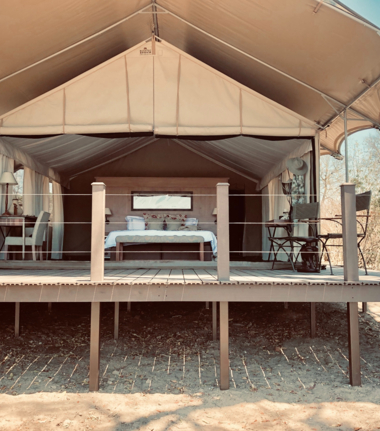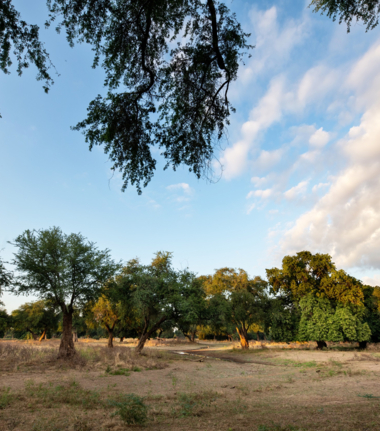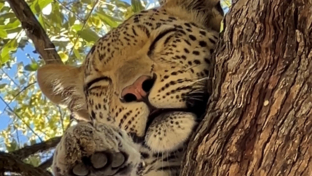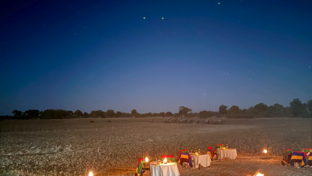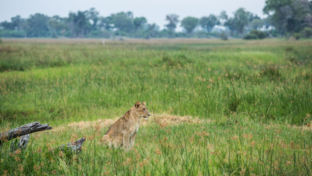Zimbabwe Ingwe Pan Wildlife Sightings May 2024
With early morning temperatures as low as 11 degrees Celsius and mid-day highs as hot as 33 degrees Celsius, the swift weather changes in the peaceful Ingwe Pan area are part of the charm of visiting this wild and beautiful part of the world. In the morning, you might leave fully layered up with a hot water bottle on your lap, and by lunchtime, you’ll be in shorts, having a glass of something cold. Only to return to the chilly weather as the evening descends.
I Won’t Badger You
Who would have thought that on one of our routine coffee breaks, our guests would get to see the hilarious sight of a honey badger covered from nose to tail in mud strutting right into camp? The funny little fellow appeared out of a thicket of bushes and strolled right into the main dining area where our guests were readying up for their next activities.
As it came into view, our guests gasped in surprise. The badger, however, was unbothered by their presence or by being watched. And just as quickly as it popped in, it sauntered back into the bushes to give whoever sees it next a chuckle. It was definitely one of the most unique sightings we had this past May!
Do You Have A Herd For Me?
The Ingwe Pan has always been a remarkably beautiful and tranquil place where the wildlife of Botswana can partake in its abundant resources. One of the most spectacular sights we’ve been consistently seeing is the brave male impala and buffalo traversing the plains on their own in search of a herd to join. What is incredible to note is the sheer size difference between the two.
Impalas, being medium-sized antelope, are not small, but compared to the towering wall of black muscle that is a buffalo, impalas are tiny. Big or small…buffalo, impala or otherwise all come to drink water at Ingwe Pan, where we know where to find them.
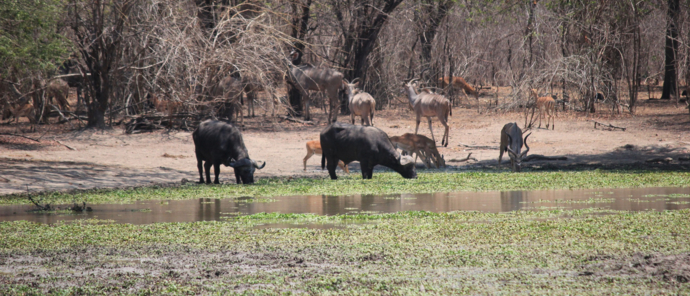
Dining With Matriarchs
Ingwe Pan Camp can count the herds of elephants that pass through camp almost every day as their guests as well. Roaming through like clockwork, the matriarch of the herd leads the elephants through the camp to join our guests for lunch as they partake in the delicious fig leaves and a refreshing drink of water.
Our guests always comment on how cute and precious the baby elephants are when they see them learning how to use their trunks. And in time, they will be as masterful at picking fruits and leaves of trees as their parents. With the days being this hot, the herds have also been mud bathing or swimming in the pan to stay cool.
Hippo Homecoming
Curiously, the hippos at Ingwe Pan disappeared and haven’t been seen for months. We thought that because of the dry season, they might have moved on to a better water source until the rains returned to the area. But on one fateful night, we heard the familiar sounds of munching coming from near camp. We headed outside to see what it was, and low and behold, it was a hippo! What a great surprise on a quiet night.
Collard Protection
At Ingwe Pan Camp, we are fortunate enough to get visits from three large-tusked elephants. Their tusks are still growing and can reach a maximum length of three metres and weigh hundreds of pounds. The beautiful tusks also serve many purposes. For instance, they can be used to dig up underground water sources, roots and minerals. Stripping the bark off of trees to feed on, fighting other males for dominance, lifting large logs and rocks and as weapons to keep predators at a distance.
Unfortunately, the very thing that makes these males so beautiful is the same thing that gets them killed. Poachers covet the ivory tusks; thus, the elephants that visit us are collard. These collars transmit important data, like their migration patterns, back to conservationists so they can better manage how to protect them and other elephants on the African plains.
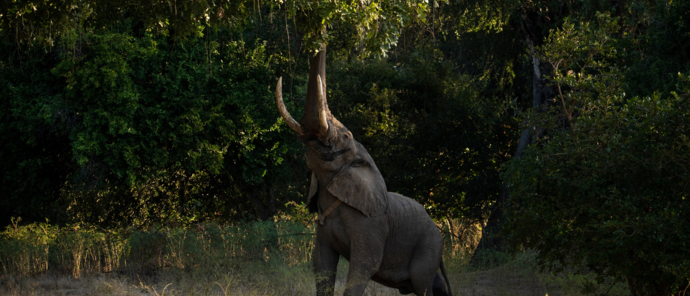
Until next time,
Everard James
Ingwe Pan Camp


